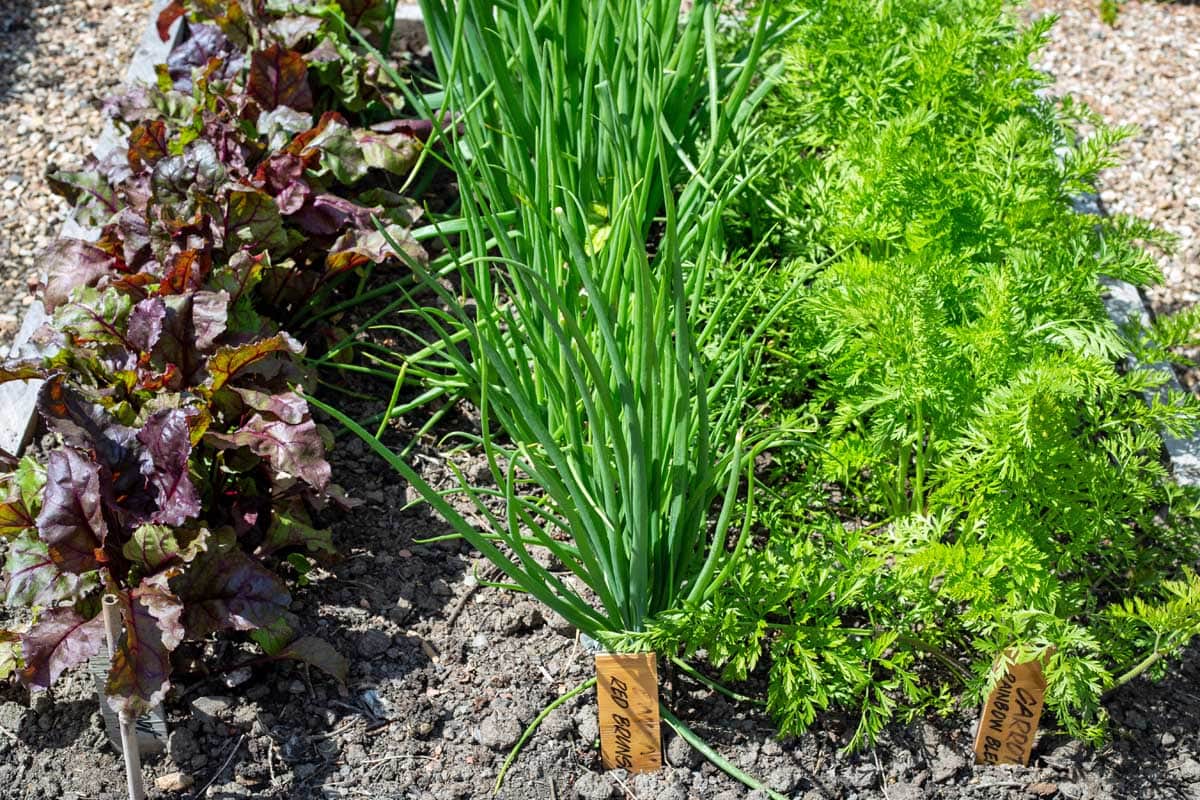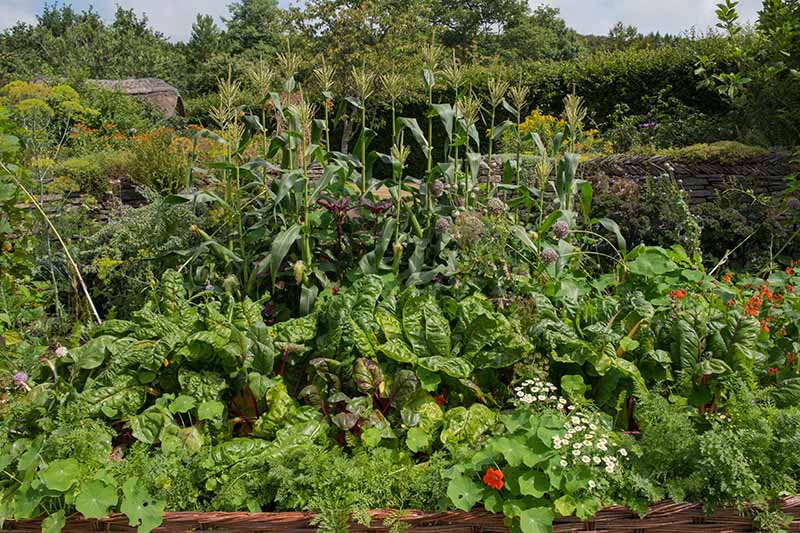The Ultimate Guide To Companion Planting For Vegetables
The Ultimate Guide to Companion Planting for Vegetables
Companion planting is a gardening practice that involves planting different types of plants together to benefit each other. This can be done by planting plants that repel pests, attract beneficial insects, or improve the growth of each other. Companion planting can help to reduce the need for pesticides, improve the health of your plants, and increase your harvest.
In this guide, we will discuss the basics of companion planting, as well as some of the most popular companion plant combinations. We will also provide a list of resources that you can use to learn more about companion planting.
What is Companion Planting?
Companion planting is a gardening practice that has been around for centuries. The idea behind companion planting is that by planting different types of plants together, you can create a more balanced and productive garden.
There are many different benefits to companion planting. For example, companion plants can:
- Repel pests: Some plants naturally repel pests, so planting them near other plants can help to keep those plants pest-free. For example, marigolds are a good companion plant for tomatoes because they repel aphids and nematodes.
- Attract beneficial insects: Other plants attract beneficial insects, such as ladybugs and bees. These insects can help to control pests and pollinate your plants. For example, carrots and onions are good companion plants for each other because they attract different beneficial insects.
- Improve the growth of each other: Some plants can actually improve the growth of each other. For example, beans and corn are good companion plants because the beans fix nitrogen in the soil, which benefits the corn.
How to Choose Companion Plants
When choosing companion plants, there are a few things to keep in mind. First, you need to consider the needs of the plants you are growing. For example, some plants need full sun, while others prefer partial shade. You also need to consider the size of the plants. Some plants, such as tomatoes, can grow quite large, so you need to make sure that you have enough space for them.
Once you have considered the needs of your plants, you can start to think about which plants would benefit each other. There are many different resources available that can help you with this. One good resource is the book "The Vegetable Gardener's Companion" by Louise Riotte. This book provides a comprehensive list of companion plants, as well as information on how to use them.
Some Popular Companion Plant Combinations
Here are some of the most popular companion plant combinations:
- Tomatoes and basil: Basil repels aphids, which are a common pest of tomatoes. It also improves the flavor of tomatoes.
- Carrots and onions: Onions repel carrot root fly, which is a common pest of carrots. Carrots also improve the flavor of onions.
- Beans and corn: Beans fix nitrogen in the soil, which benefits corn. Corn provides shade for beans, which helps to keep them cool.
- Lettuce and marigolds: Marigolds repel aphids and other pests, which can help to keep lettuce pest-free.
- Cucumbers and nasturtiums: Nasturtiums attract beneficial insects, such as ladybugs and bees. These insects can help to control pests and pollinate cucumbers.
Conclusion
Companion planting is a great way to improve the health and productivity of your garden. By planting different types of plants together, you can create a more balanced and pest-resistant garden. There are many different resources available to help you learn more about companion planting, so be sure to do your research before you start planting.
Companion planting is a gardening technique that involves planting certain plants together to benefit each other. There are many benefits to companion planting, including:
- Increased yields
- Improved plant health
- Reduced pest and disease problems
- Increased pollination
- Enhanced flavor
If you're new to companion planting, you can find a wealth of information online. One great resource is Gardenia Inspiration. This website has a comprehensive companion planting chart that lists which vegetables grow well together. It also has articles on the benefits of companion planting and how to get started.
I encourage you to visit Gardenia Inspiration to learn more about companion planting. It's a great way to improve your garden's productivity and health.
FAQ of companion vegetables
What are companion vegetables?
Companion vegetables are plants that grow well together and can even benefit each other. Some companion plants attract beneficial insects that help to control pests, while others help to improve the soil or deter diseases.
What are some good companion vegetables?
Here are some examples of good companion vegetables:
- Basil and tomatoes: Basil helps to repel pests such as thrips and mosquitoes, and it also improves the flavor of tomatoes.
- Beans and corn: Beans fix nitrogen in the soil, which benefits corn. Corn provides shade for beans, which helps to protect them from the sun.
- Carrots and onions: Carrots and onions repel each other's pests, so they can be planted together to help control pests.
- Cucumbers and marigolds: Marigolds help to repel pests such as aphids and beetles, which can damage cucumbers.
- Peas and lettuce: Peas and lettuce have different root systems, so they don't compete for water or nutrients. They also provide good cover for each other, which helps to protect them from pests.
How close should companion plants be planted?
In general, companion plants should be planted within two or three rows of each other. This will help to ensure that they benefit each other, without competing for resources.
What are some vegetables that should not be planted together?
There are a few vegetables that should not be planted together, as they can compete for resources or even harm each other. These include:
- Garlic and onions: Garlic and onions have strong scents that can stunt the growth of other plants.
- Tomatoes and kohlrabi: Tomatoes and kohlrabi are susceptible to the same diseases, so planting them together can increase the risk of disease transmission.
- Potatoes and corn: Potatoes and corn compete for nutrients, so planting them together can lead to nutrient deficiencies.
Where can I find more information about companion vegetables?
There are a number of resources available online and in libraries that can provide more information about companion vegetables. Some good resources include:
- The Vegetable Garden Primer by Mel Bartholomew
- The New Organic Grower by Eliot Coleman
- The Companion Planting Handbook by James A. Duke
Image of companion vegetables
5 different images of companion vegetables from Pinterest:
- Basil and tomatoes: Basil is a great companion plant for tomatoes because it helps to deter pests and attract beneficial insects.
- Cucumbers and nasturtiums: Nasturtiums help to deter cucumber beetles, while cucumbers provide support for nasturtiums to climb.

- Carrots and onions: Carrots and onions help to repel each other's pests, so they can be planted together to help reduce pest problems.

- Beans and corn: Beans fix nitrogen in the soil, which benefits corn, while corn provides shade for beans.

- Lettuce and spinach: Lettuce and spinach can be planted together because they have similar growing requirements.

Post a Comment for "The Ultimate Guide To Companion Planting For Vegetables"